MAY 21, 2025: We arrived in Copenhagen late last night when it was already dark outside, and we did not see much on the way to our hotel. Check in to the hotel was done on an app, and our phones were used as the room key. When we reached our hotel, we went straight to our room, without seeing or talking to anyone. Only the next morning did we discover how nice it was, both the hotel and the city.
The hotel was decorated in typical Scandinavian style – simple, functional and mixes neutral colors with natural woods. In the hotel lobby, they had the same woven cord and wood chairs that I have in my apartment in New York. Made me feel right at home.
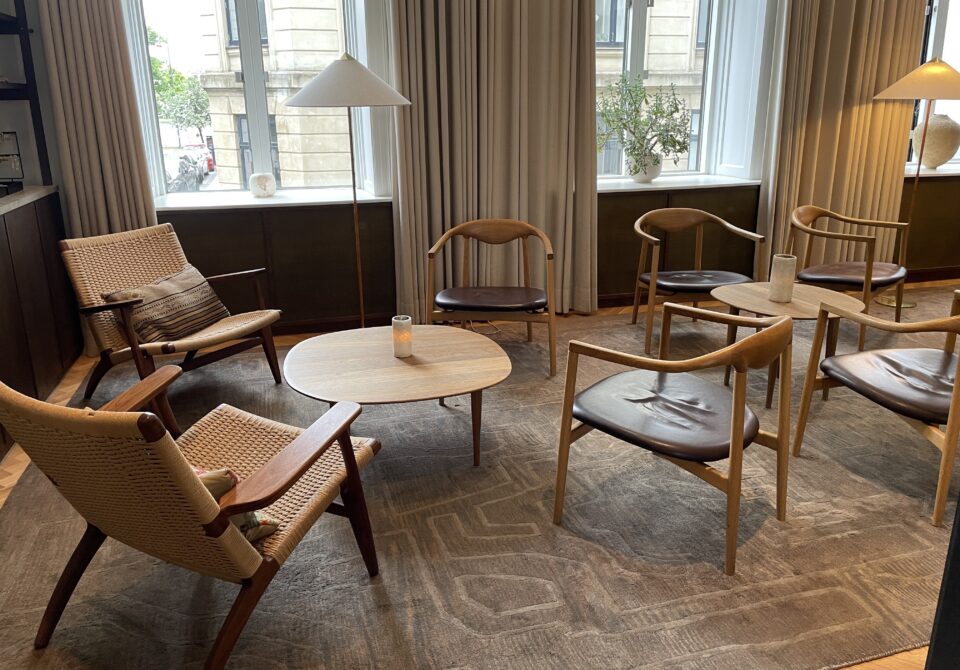
We started our day with the hotel’s breakfast buffet, which surprised us with its variety – lots of pickled items (apples, pears and even pickled nuts!), herring in different sauces, snap peas, and whole vegetables like uncut cucumbers and carrots. There was a large selection of fresh sprouts, alongside which was a pair of scissors for you to cut a serving with. The many breads were all whole grain—no white bread in sight—and the cheeses were delicious. The emphasis was on healthy, fresh local produce. Even the coffee mugs were created by a ceramic artist whose studio was next door.
After breakfast, we started to explore. Our first impression of the city was very favorable – clean, well-maintained, colorful, and beautiful blending of historic and modern architecture. Full of lush green parks and hundreds of bicycles everywhere.
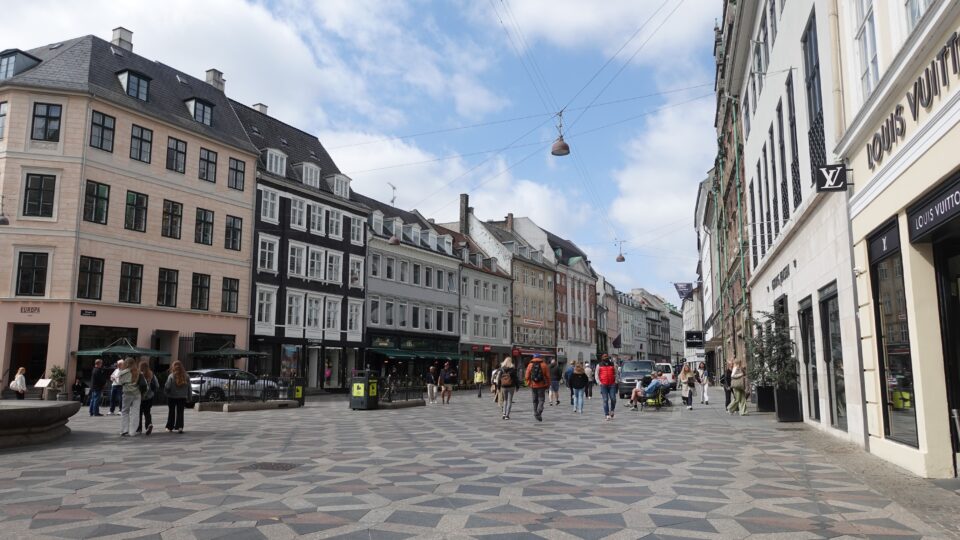

Our first stop was Israels Plads (Israel Square). The square was established in 1853 as a marketplace until the 1950s, when it was turned into a car park when the market moved elsewhere. In 2008 there was a design competition for the refurbishment of the plaza, and in 2014 the new plaza was opened. While we were there the plaza was filled with children on recess from the adjacent schools.

The plaza was renamed as Israels Plads in 1968 to mark the 25th anniversary of the rescue of the Danish Jews during World War II. It’s name honors the biblical land of Israel and the significant role of the Danish Jewish community. On the side of the plaza is a large stone – a Gratitude Monument to the Danish people in Copenhagen. The monument is inscribed in Hebrew and in Danish, which translate to “This stone from the Holy Land is a gift to the Danish people from Denmark’s friends in Israel 1975”
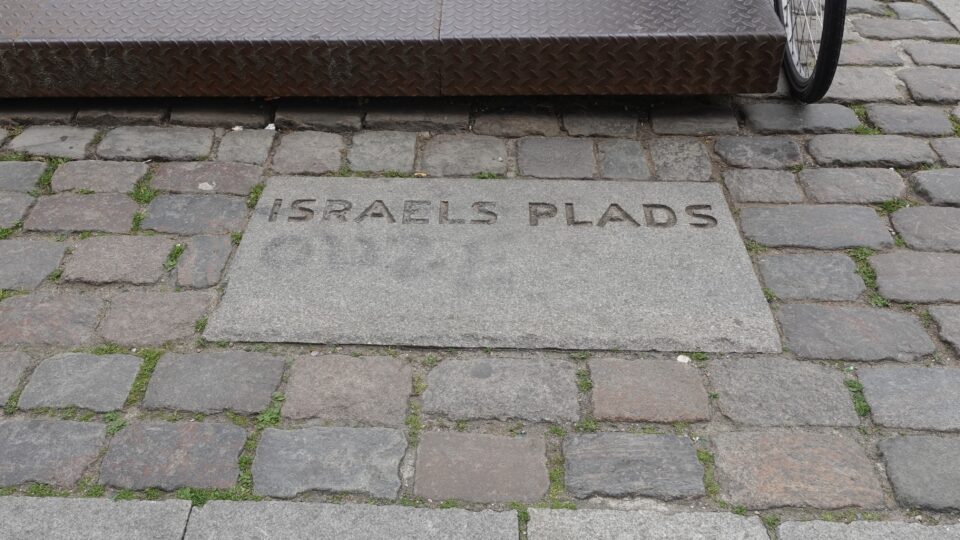
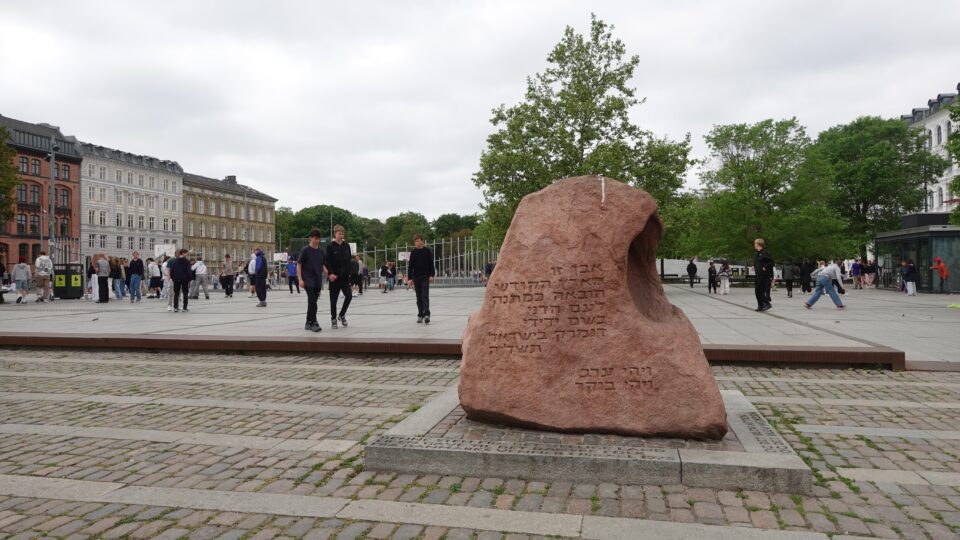
Across the street from the square is an indoor food market, Torvehallerne, featuring stalls with local produce, gourmet foods, beverages & desserts. Adjacent to it are outdoor fruit, vegetable and flower stalls.
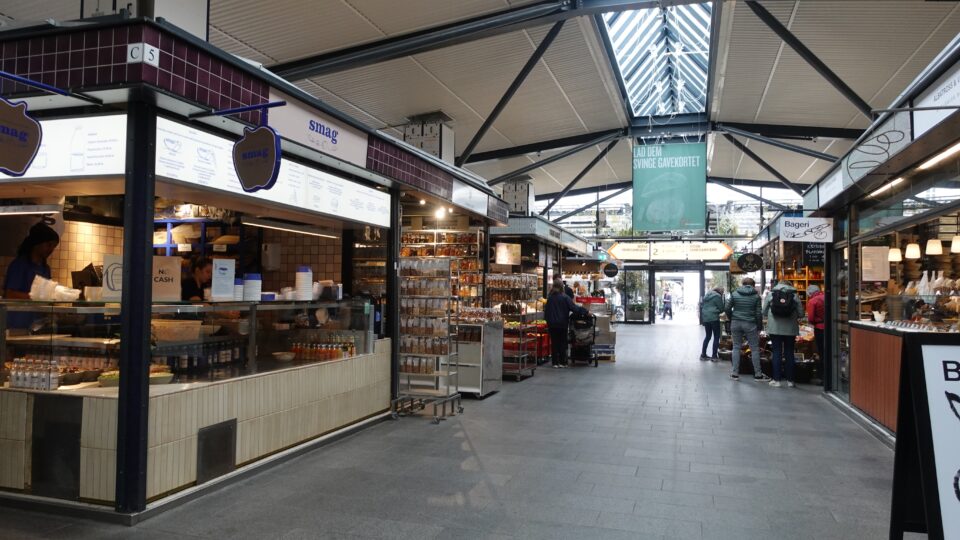
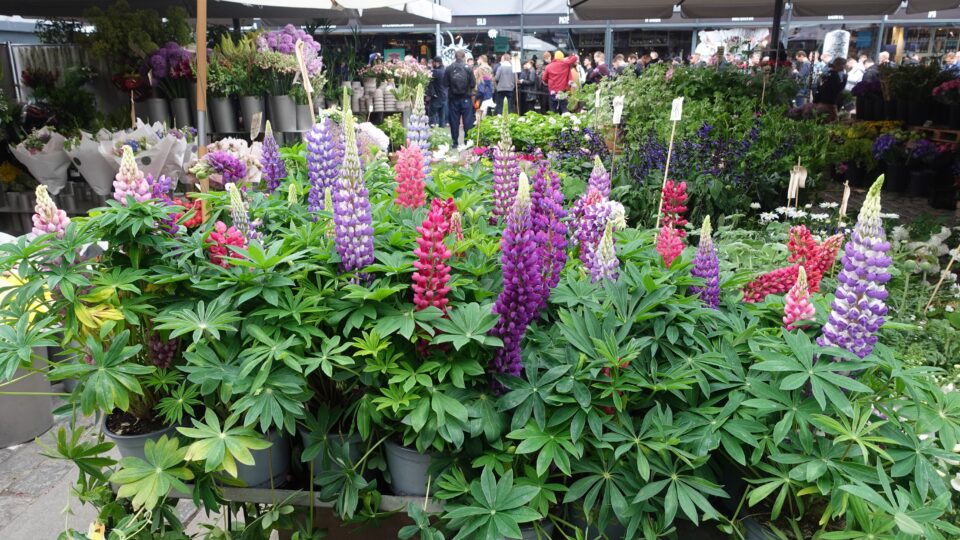
From there, we walked to the Great Synagogue of Copenhagen. The street was closed to traffic and guarded by soldiers. We inquired about visiting and were told we needed an appointment. Fortunately, when we rang the bell to schedule an appointment, a friendly Israeli guard came out, verified our information, and gave us a private tour. He showed us the beautiful sanctuary, which is still active—about 200 people attend on Shabbat. There’s also a Jewish school serving the local community.
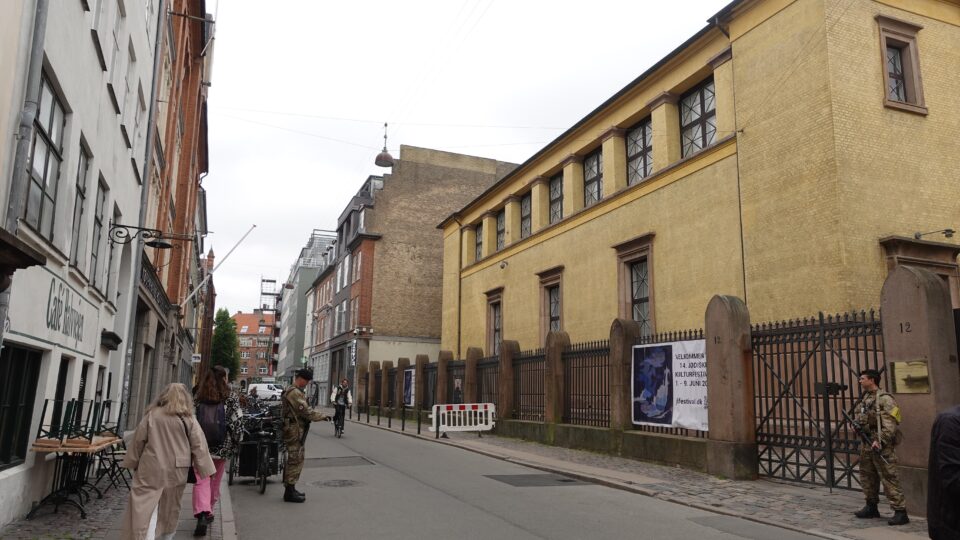
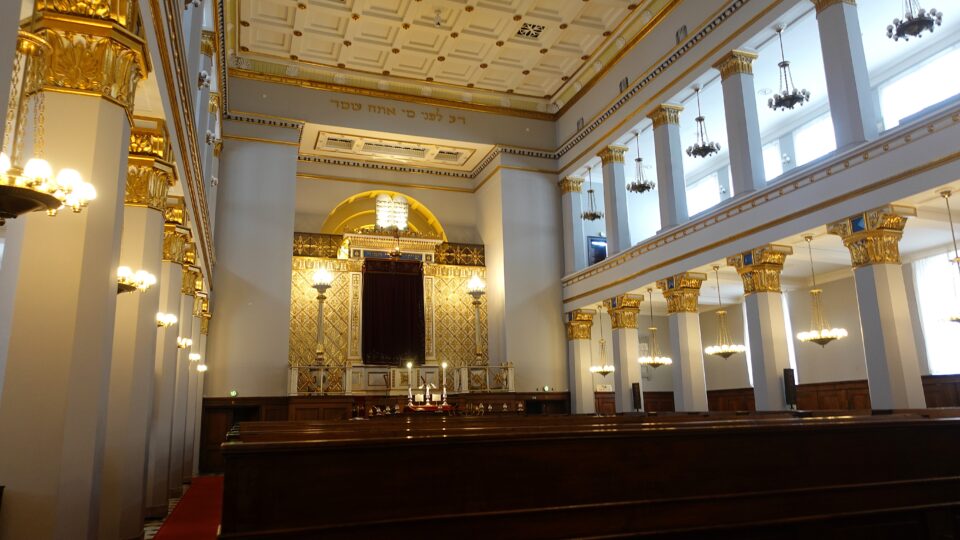
Outside the synagogue, we found a small Holocaust memorial in the backyard. Six granite pillars commemorate the six million Jewish victims of Nazism. The monument was unveiled on Israel’s Holocaust Remembrance Day in 1986.

In the early hours of February 15, 2015, during a bat mitzvah celebration at the synagogue, a gunman approached and opened fire, killing 37-year-old Dan Uzan, a Jewish community member serving as a volunteer security guard. Two police officers were also wounded in the attack. The assailant fled the scene without entering the synagogue, where approximately 80 people were gathered. A plaque at the entrance to the building grounds commemorates this event.
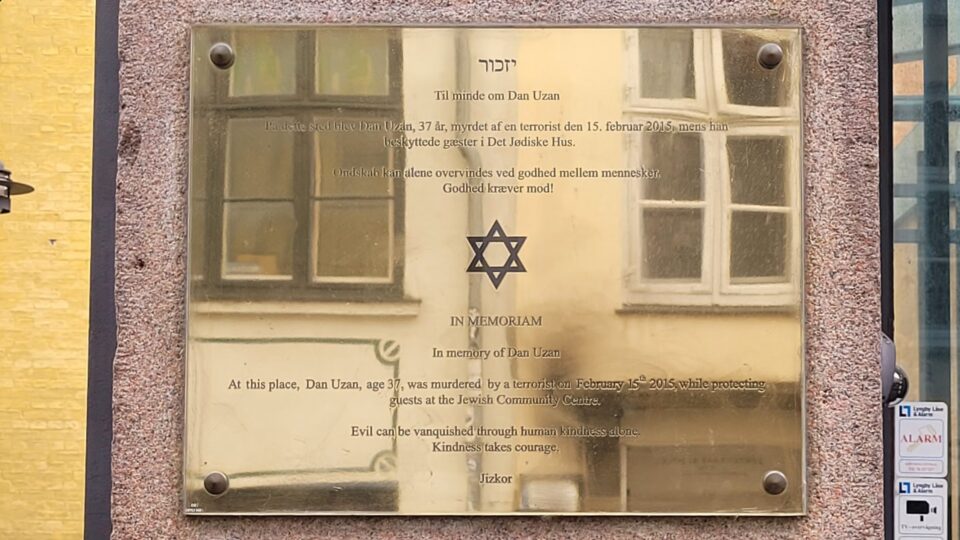
In front of the synagogue are a row of Stolpersteine (“stumbling stones”) embedded in the sidewalk. Although most of the 7000 Jews in Denmark were saved, 470 Danish Jews were arrested in 1943 and deported to Theresienstadt, of which 53 died there. The stones here have the names of eight Jews that were murdered in the concentration camp.
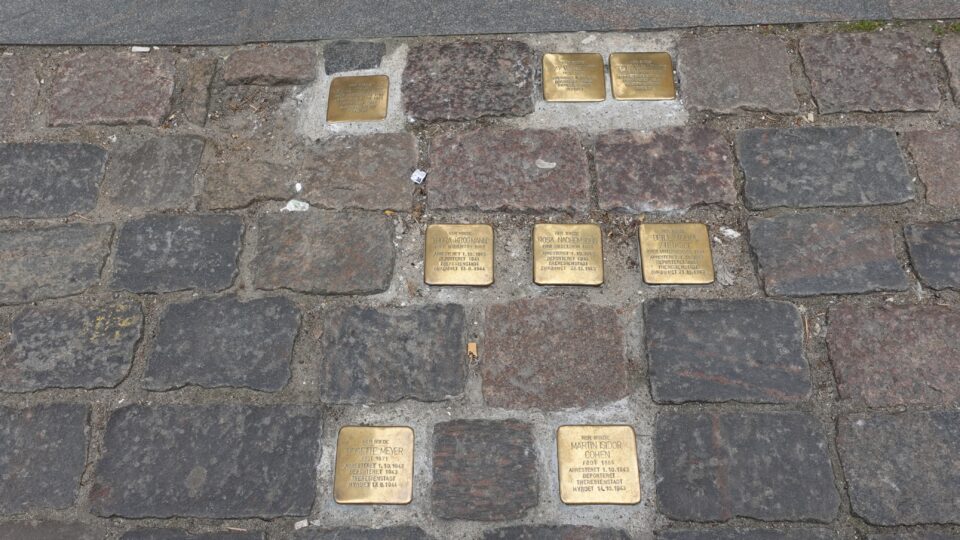
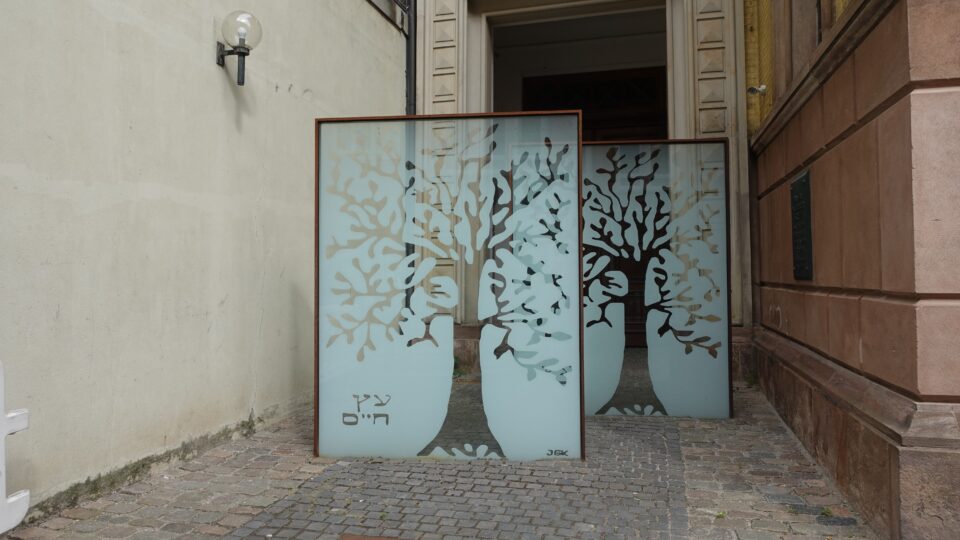
From the synagogue, is was a short walk to the Round Tower (Rundetaarn), an astronomical observatory. Towards the top, etched in gold is an inscription that includes the Tetragrammaton—the four-letter Hebrew name of God, YHWH. This was part of the original design of the tower built by King Christian IV in the 17th-century. In the early 1600’s, King Christian IV invited Jews to settle in Denmark out of a strong desire to develop the Danish economy. He subsequently issued a letter of protection for all Jews, and so they began to travel, settle, and trade in his northern kingdom.
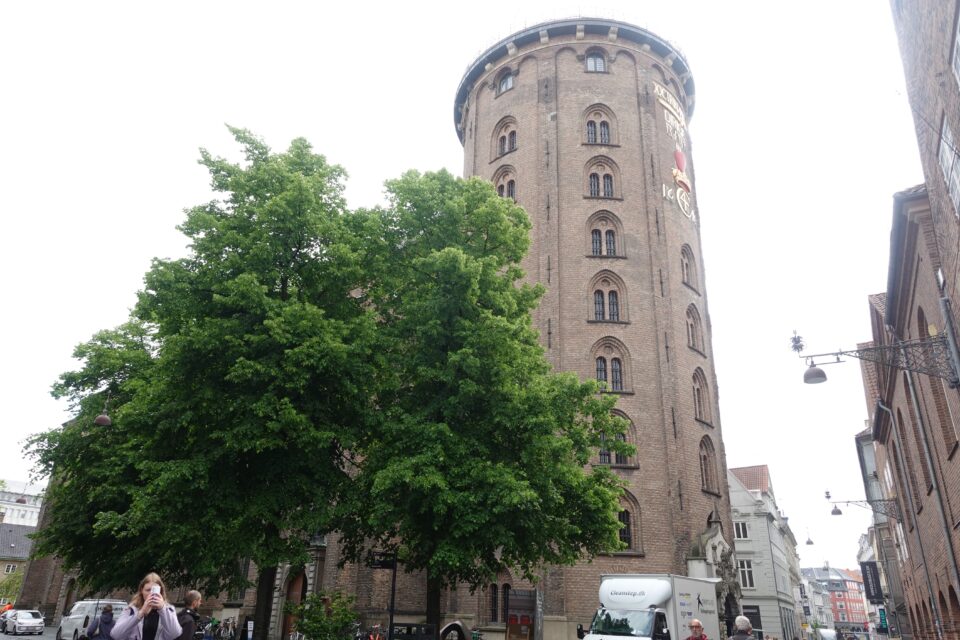
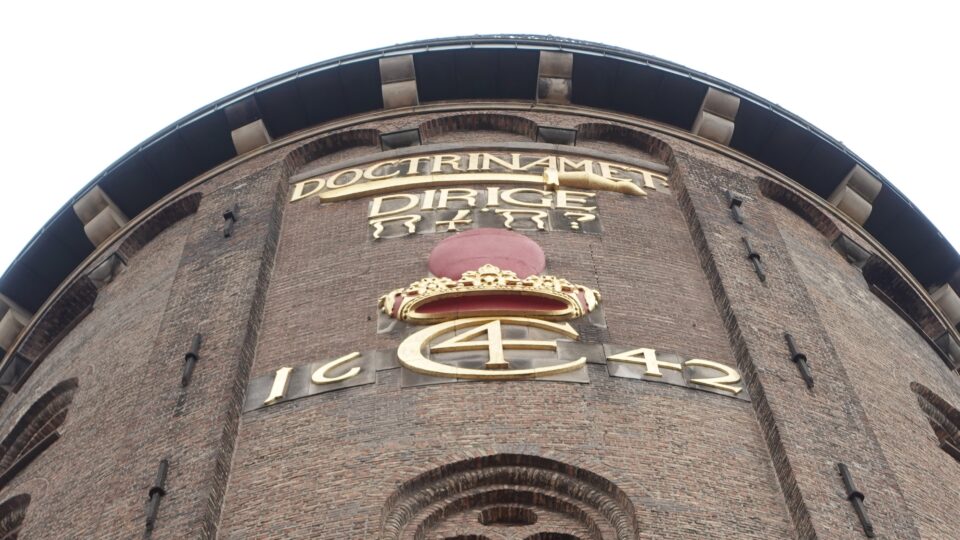
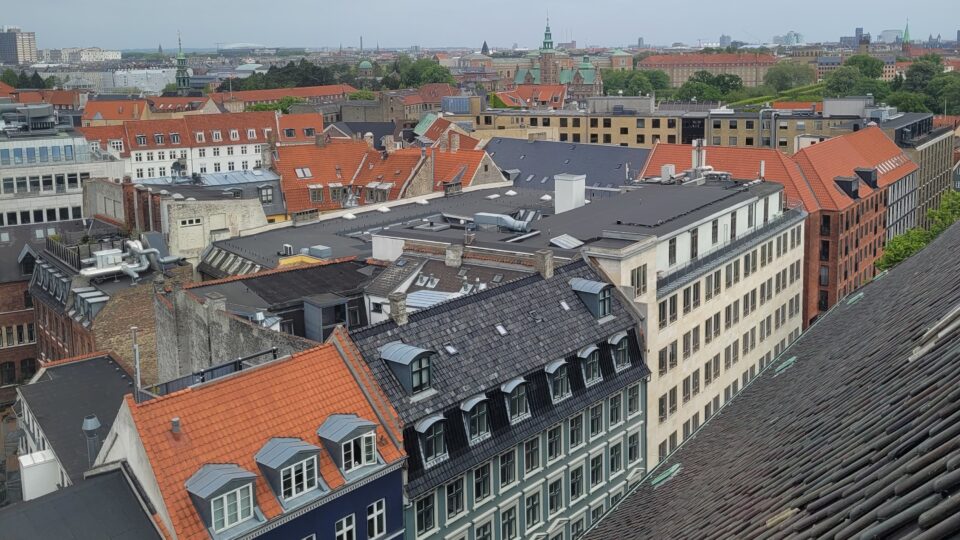
There are many different theories why he included the Tetragrammaton on the inscription of the tower. The same Tetragrammaton also appears on coins that he minted. One theory is that his Jewish court physician, Rabbi Binyamin Mutzafi, influenced him to do so. Others believe that it is part of a Latin rebus, a visual and textual riddle combining letters and symbols reflecting Christian IV’s belief in the harmony of science (the astronomical symbols), faith (the Tetragrammaton), and royal power (the crown).
From the tower, we walked through the city and our impression remained very favorable. As we made our way to the Danish Jewish Museum, we continued to be enchanted by all we saw. The museum is a small but thoughtfully designed space. At the beginning of the tour, a movie narrated by the late Chief Rabbi Bent Melchior, was especially powerful. On October 8, 1943, as a teenager, he escaped in a fishing boat with his family to Sweden and remained in contact throughout his life with the family that welcomed them. The museum’s slanted floors are meant to evoke a ship’s movement—recalling the boats that carried him and other Danish Jews to safety.
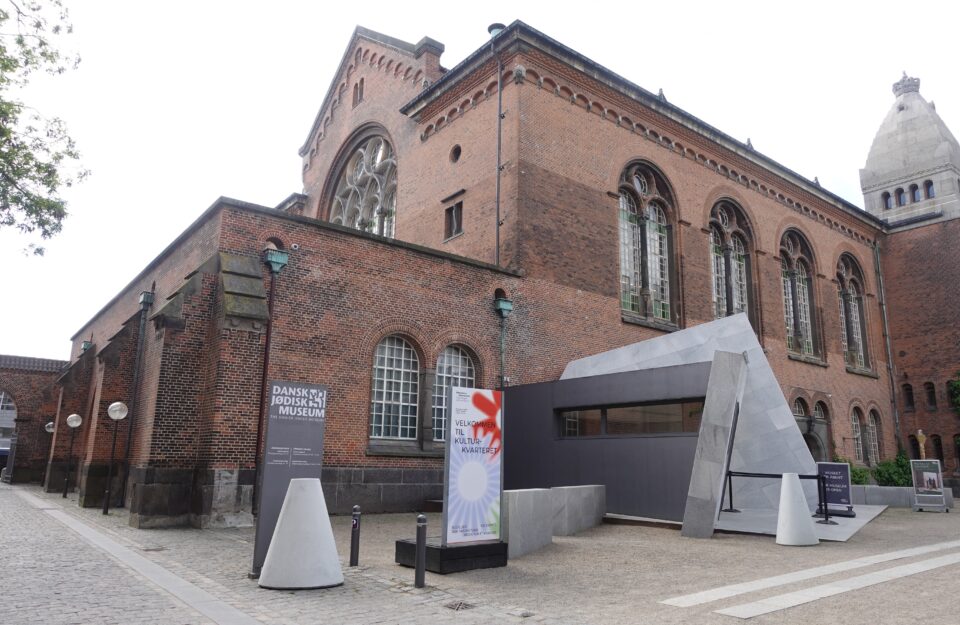
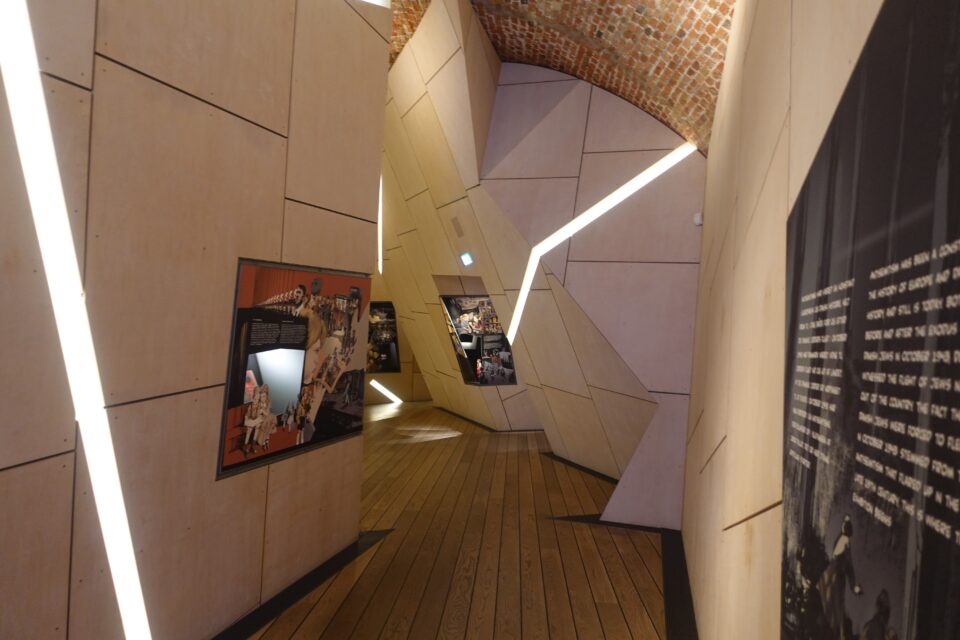
Each exhibit in the museum centered on a single object that tells a broader story. For example, on display was a German children’s book meant to illustrate antisemitism in 1936. The book, published in 100,000 copies, taught children how dangerous Jews were and how they should be treated. Antisemitism also existed in Denmark, and many Jews who were seeking entry into the country were turned back at the border.

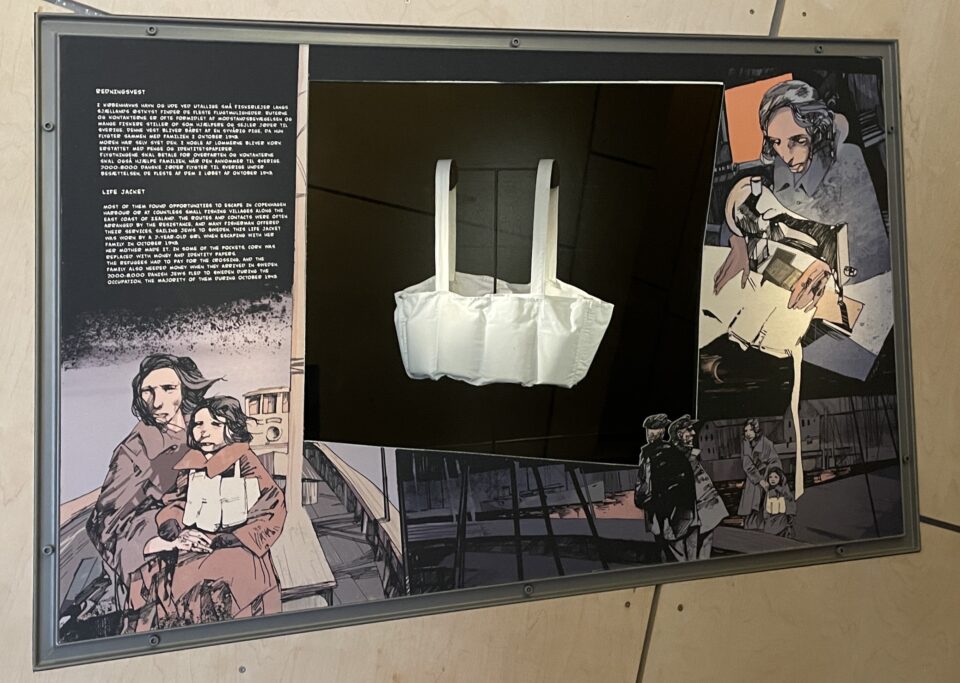
In the gift shop of the museum we found hanging on the wall a map of the Jewish sites around the city, including some we had not yet known about, and added them to our itinerary.
Across the street from the Jewish Museum, we then visited the Royal Library, also known as the Black Diamond for its sleek, modern architecture. Someone from Mark’s morning minyan in Israel had told us about a Judaica collection there. It was assembled by Rabbi David Simonsen (1853–1932), a prominent Danish rabbi, scholar, and philanthropist. In 1932, shortly before his death, Simonsen sold his extensive personal library to the Royal Library. The David Simonsen Collection comprises approximately 25,000 printed volumes in Hebrew, Yiddish, and various Western languages and around 200 manuscripts spanning 15 languages and 20 countries, including rare items such as a handwritten Hebrew Bible from the 13th century. While the collection is not on public display, we were told you can request access to specific items with 48 hours’ notice. Much of the collection has been digitized and is accessible online.
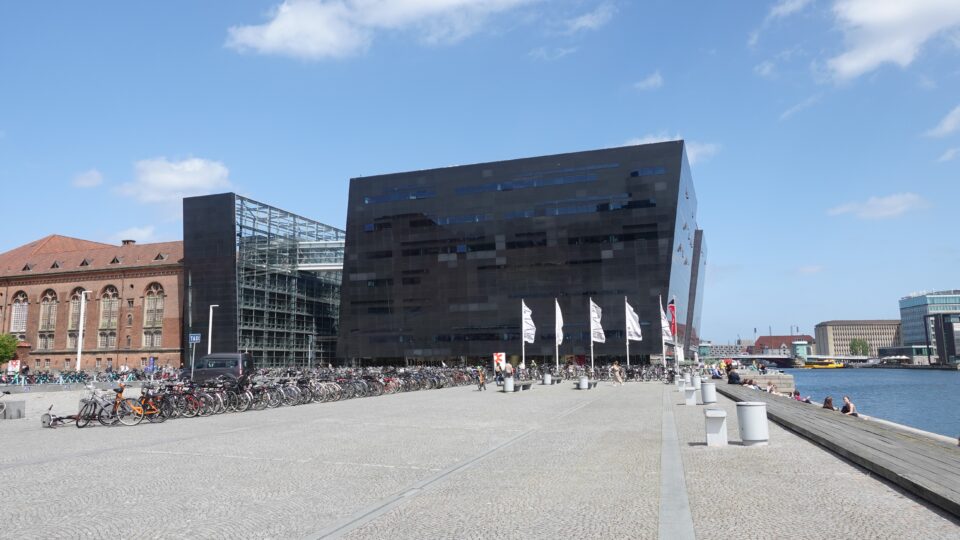
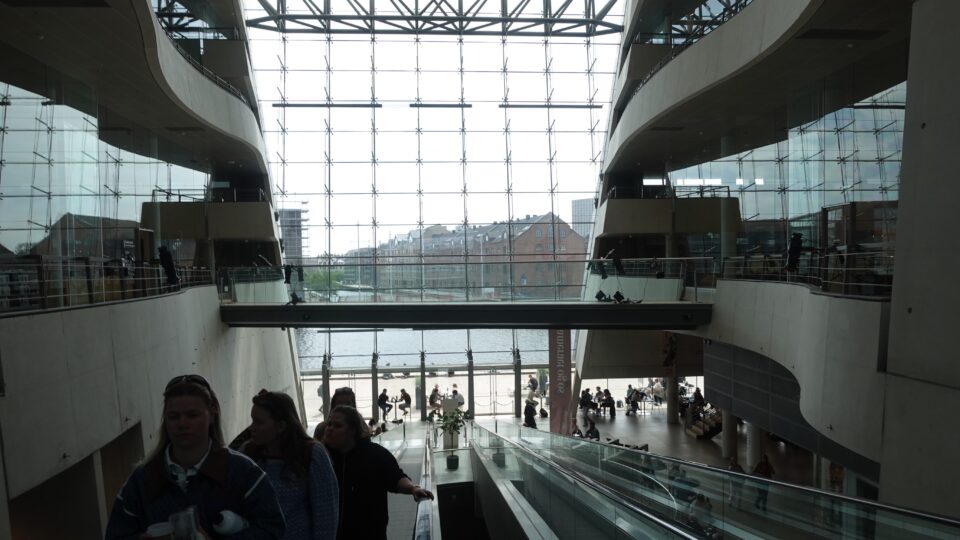
Luckily, a temporary exhibit of library treasures had some Wandering Jew relevant items, including a 13th-century handwritten Hebrew Bible.

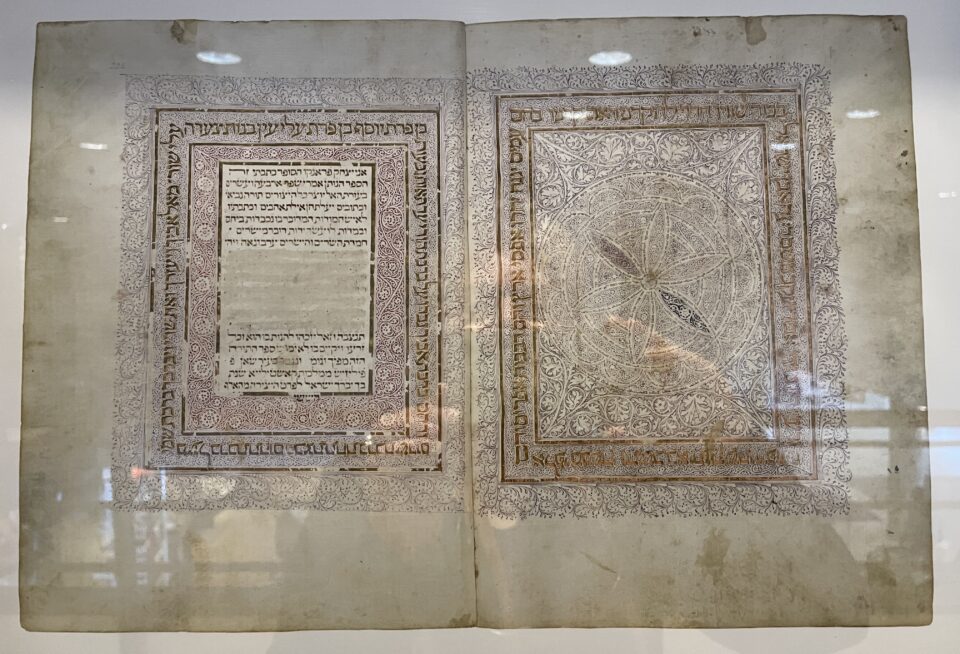
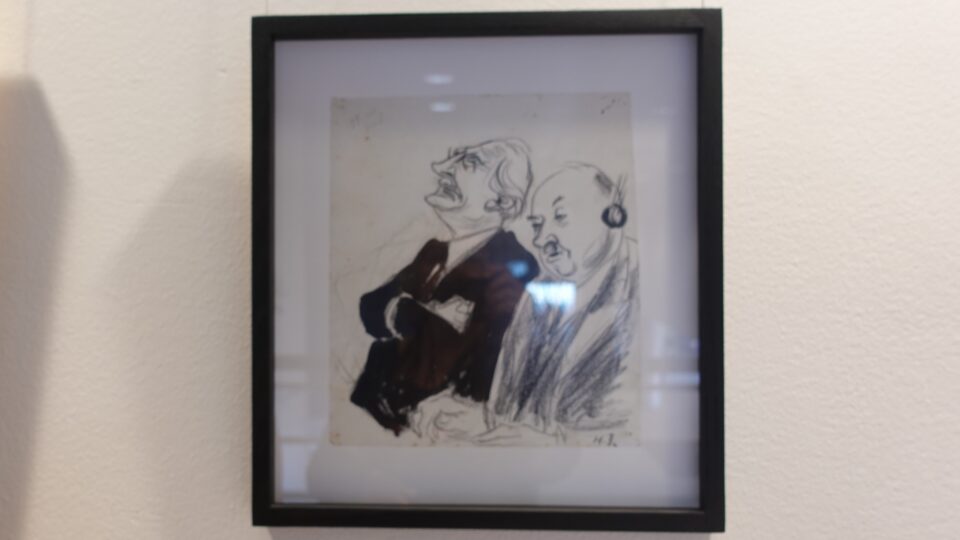
Before leaving the library, we stopped for a Surdejsbrod med kartoffler pastry in the café— a warm bread roll topped with potatoes. As we ate, we glanced at the complimentary newspaper that was provided for reading. The front page showed a very large photo of wounded children in Gaza. Not pleasant to see. The caption translated to Israel’s actions in Gaza draw criticism from the Danish Parliament and NGOs.
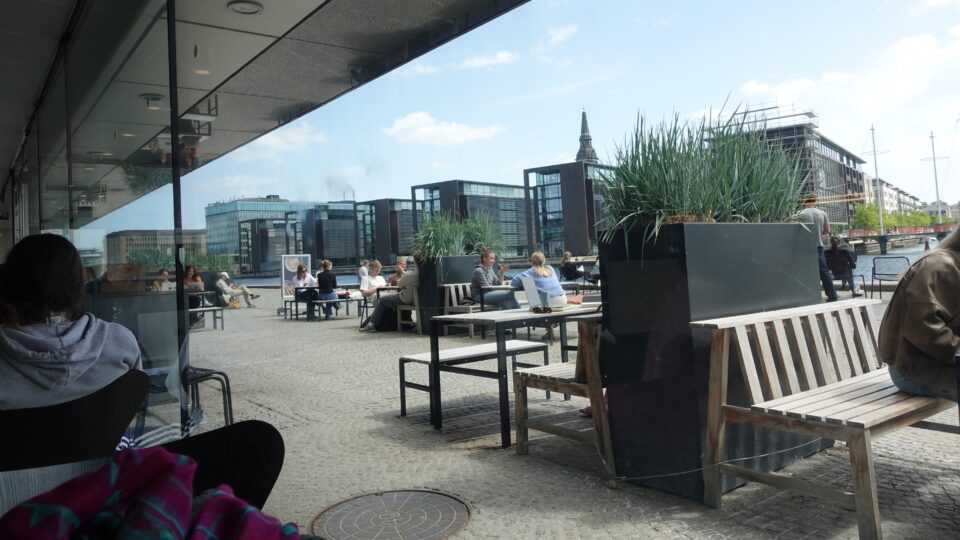
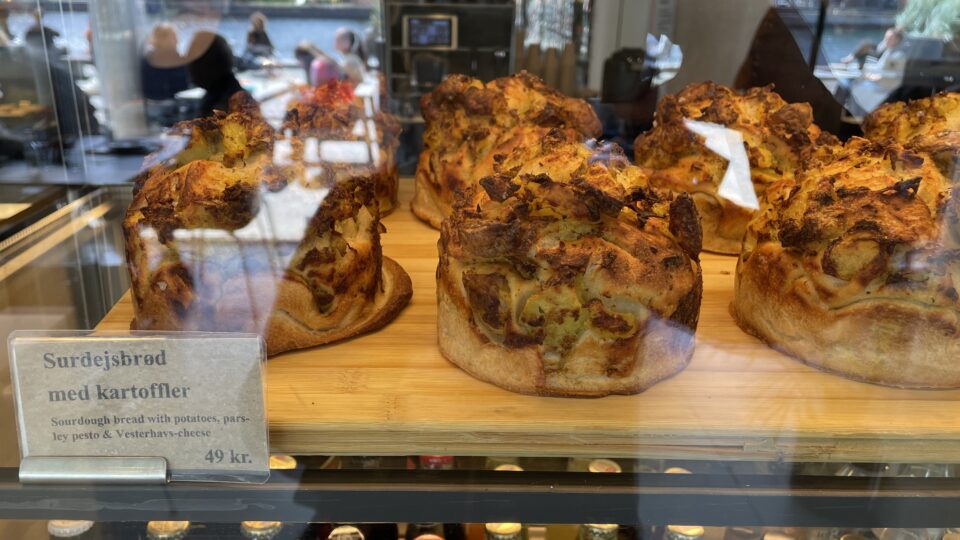
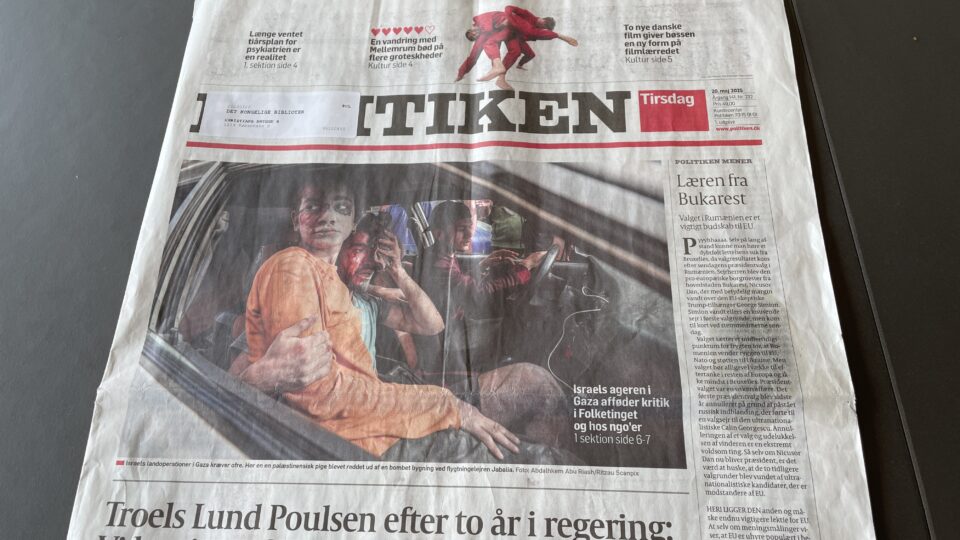
We then headed a kilometer southwest along the waterfront looking for the Plaque for Polish Jews. This plaque honors the arrival of over 2,000 Polish Jews who sought refuge in Denmark between 1969 and 1971. It marks the site where the hotel-ship St. Lawrence was moored—serving as the initial residence for these refugees fleeing an anti-Semitic campaign by Poland’s then-communist government.

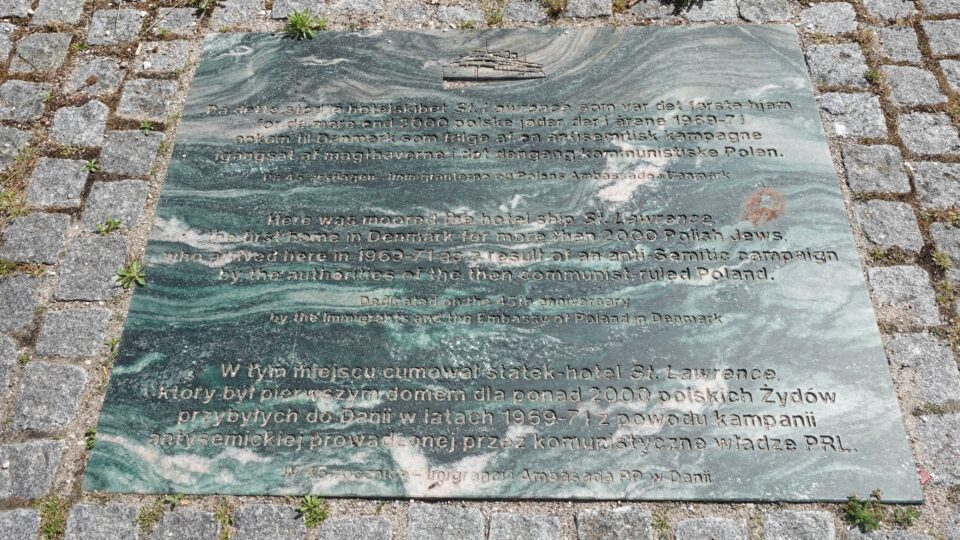
After walking along the waterfront and finding the plaque for Polish Jews, we took an Uber back to the hotel. For dinner, we considered going across the river but felt unsure about the neighborhood—restaurant names like Gaza Grill and Beirut Shawarma gave us pause. We ended up staying near our hotel and ate at Trattoria SUD, a cozy Italian spot. The pasta and risotto were delicious, and just like everything else in Copenhagen, quite expensive.
We still have more Jewish sites in Copenhagen to see, as well as some iconic classic tourist destinations – the Little Mermaid statue and Nyhavn harbor – to explore. Good that we are staying here an additional day.

Was the 13th-century handwritten Hebrew Bible in the picture the one from Rabbi Simonsen’s collection?
Looks beautiful!